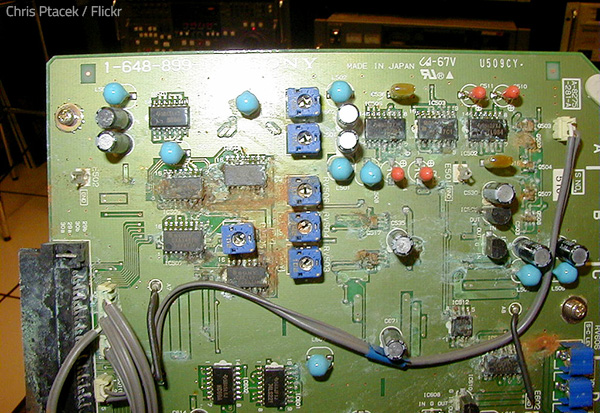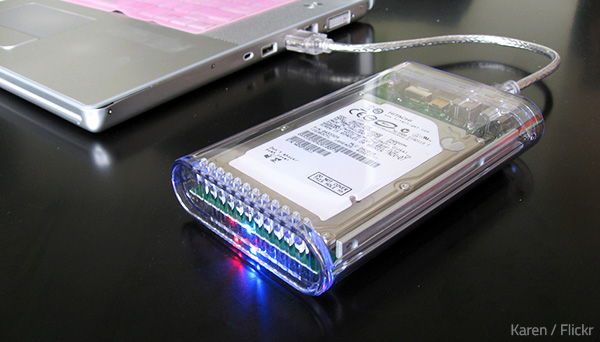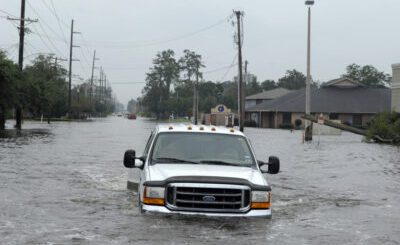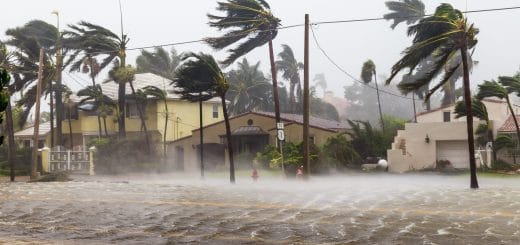How to Restore Flood Damaged Electronics
Floods, whether due a major pipe burst in your basement, a torrential spring rainfall or a hurricane, are a devastating event. The massive amounts of water involved in a flood permeateTo permeate is to pass through or spread throughout a materi... More every nook and crevice of a home, seeping into electronics and destroying its capacity for usage.

What is the chance of your house being designed to function as an underwater home?
While it’s understood that water and electronics don’t mix, most of us rarely ask why. After all, water is a natural part of the environment and essential for the survival of all life. What makes water so destructive to technology?
Water in its purest form, such as distilled water, is rather harmless. However, impure water, which includes a hefty dose of minerals, salt and other ions, is ruinous to electronics. Tap water and drinking water are examples of impure water. When these tiny minerals and salts infiltrate your device via a flood of impure water, they settle inside the electronics, creating false connections and upsetting the internal circuitry.
- Pure water can still pose as a hazard to your electronics, especially when the water is mixed with materials like paper capacitors that dissolve in water.
- Conductive water will also damage electronics. Water, when pooled with minerals, salts and ions, becomes more conductive, thereby posing as a risk to technology.
- Corrosion is another major cause of damage to electronics. When water, in combination with oxygenOxygen is a chemical element essential for combustion and li... More, comes into contact with a metal, it forms a chemical reaction that leads to the gradual breakdown of the metal.
So how do you tackle flood-damaged electronics?
Take Safety Precautions

Safety should be the first thing on your mind, no matter what.
Safety is the first precaution. Since water and electricity is a dangerous combination, it’s important to be careful when handling wet or water damaged technology. Aside from injuring yourself, a lack of know-how can leadLead is a heavy metal that can be toxic to humans, especiall... More to further damage to the device itself. Experts suggest that average consumers not attempt to fix their water-logged electronics, but rather take them to a professional. Plus, you might benefit if you check your device’s warranty before handing over the repairRepair is the act of fixing or restoring damaged property, m... More to a pro.
In the event you’re willing to try to salvage your technology, there are a few steps to take that might breathe life back into your devices.
Stop Power to the Device
Turn off the device, and remove the batteries or power connectors first. Without power, your gadget will not be able to short circuit, thereby improving the chances that it may be restored. You’ll also prevent injury to yourself while handling the wet electronics.
Lithium ion batteries, such as those in a laptop or phone, that have been exposed to huge amounts of water will die immediately. The alkaline elements within these types of electronics react in a catastrophic way.
Rinse the Electronics
The efficiency of rinsing electronics is highly dependent on the type of electronics at stake. Smaller electronics, for instance, will unlikely benefit from further wetness. Handheld electronics are able to function when the compartments remain thoroughly dry.
However, some experts recommend flushing large electronics with clean, pure water to dislodge the salt and mineral sediments. Major technology that has been exposed to water damage is unlikely to be further ruined by a clean water rinse.
Clean the Corrosion

Your device can be salvaged when it’s properly cleaned and dried.
The extent of corrosion eating away at your device depends on the length of time the device was exposed to water and even on how the device was manufactured. Corrosion takes time to develop. Plus, corrosion may not be visible from the outside of the device.
Green or encrusted areas along the device, battery connectors, charging ports and similar metal connectors should be cleaned off. Cotton swabs dipped in a cleaning solutionA solution is a homogeneous mixture of two or more substance... More, like isopropyl alcohol, will cleanse the device of the corrosion. Plus, the alcohol will quicken the water evaporationEvaporation is the process by which a liquid, such as water,... More process.
Large electronics should be cleaned of any contaminations and oxidized materials resulting from the flood.
Dry the Gadget
If your device is small, you can gently shake out the water to remove as much moisture as possible. If you are tech savvy, you might be able to remove a few panels to dislodge any remaining water.
You can also use a hair dryer on its coolest setting. Experts warn to never apply heat to dry out the technology.
A soft cloth can also remove excess moisture from the electronics.
Once the device is thoroughly dry, it is safe to attempt to replace the battery or power it on.
Technology damaged by water offers no guaranteed fix, especially if corrosion has set in. The above steps may increase the chances of repairRepair is the act of fixing or restoring damaged property, m... More, but it’s more than likely that water damaged electronics will require a professional restoration.
If your electronics were completely submerged in water, the internal circuitry is likely to be beyond repairRepair is the act of fixing or restoring damaged property, m... More. Damaged parts can be replaced; however, the cost of the parts and repairRepair is the act of fixing or restoring damaged property, m... More is likely to be exceptionally high. Submerged electronics are better off being replaced. In such instances, notify your insurance company for each of the damaged devices.
Have Your Electronics Professionally Restored

Welcome back to life!
Remember that tinkering with electronics poses as an inherent danger. It’s best to leave the repairRepair is the act of fixing or restoring damaged property, m... More service to companies experienced in restoring electronics damaged by water. The water damage restoration professionals at RestorationMaster are fully equipped to restore the water damaged goods in your home. If your property is inundated with flood water, the specialists at RestorationMaster will remove your belongings, including electronics, to a safe and dry facility for cleaning and storage. These pack-out services ensure that your items are not further damaged by the moisture inside your home or business. Your items are stored in a climate controlled storage area until your property is thoroughly dried and ready for the return of your goods.
RestorationMaster skilled technicians utilize advanced water extraction methods and equipment to dry out the premises of your home or business. Powerful dehumidificationDehumidification is the process of reducing and controlling ... More techniques are employed for optimum results.












